...
| Center |
|---|
| Scroll Title |
|---|
| title | Figure- InfiLINK XG block diagramScheme |
|---|
| 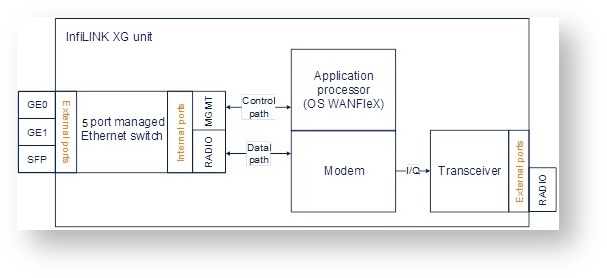
|
|
| Note |
|---|
| title | NOTE |
|---|
Please make the distinction between the internal "RADIO" port of the Ethernet switch used for the data path separation and the external "RADIO" port of the unit. |
The following 5 ports are available at InfiLINK XG:
- "GE0" and "GE1" ports - external copper Gigabit Ethernet ports 1000BASE-T (IEEE 802.1ab).
- "SFP" port - external optical Gigabit port for plugging of the optical SFP transceiver module.
- "RADIO" port - internal radio interface of the device.
- "MGMT" port - internal interface for the device management.
The switch page has four sections:
- "Switch Port Settings"
- "Port Interconnection Schema"
- "Connectivity matrix"
- "VLAN-based Switching"
| Center |
|---|
| Scroll Title |
|---|
| title | Figure - Switch section |
|---|
| 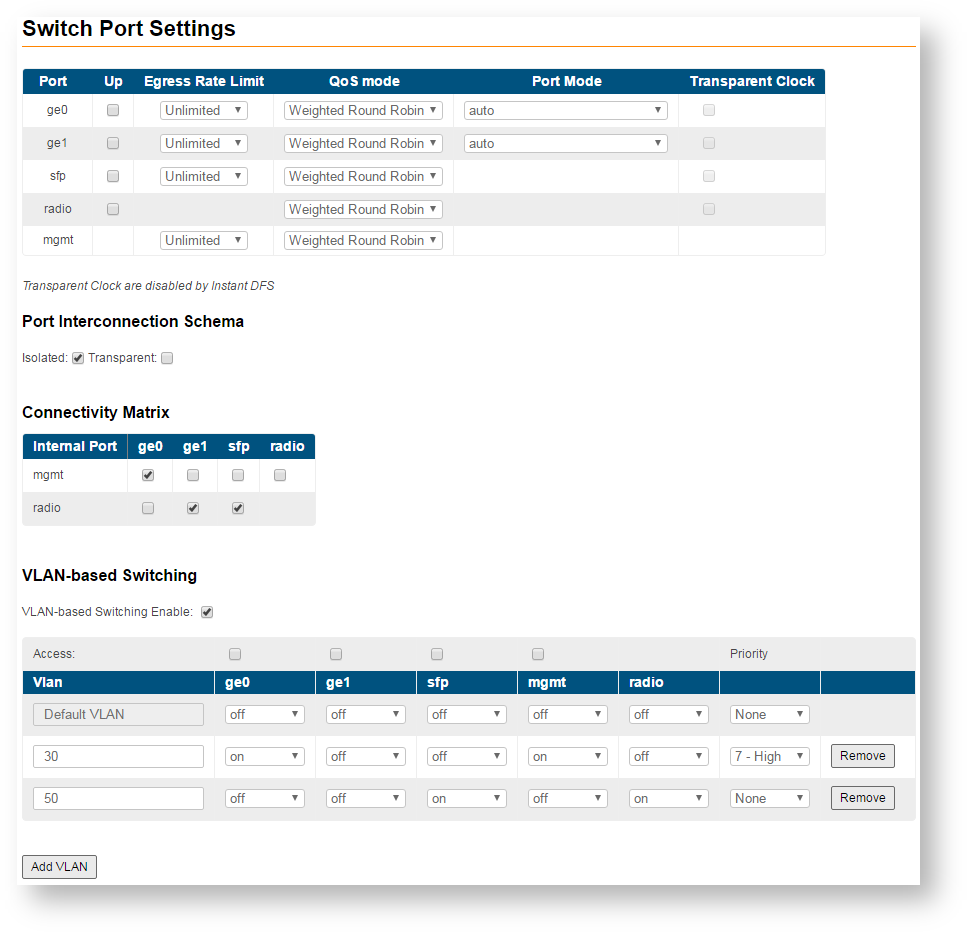 Image Removed Image Removed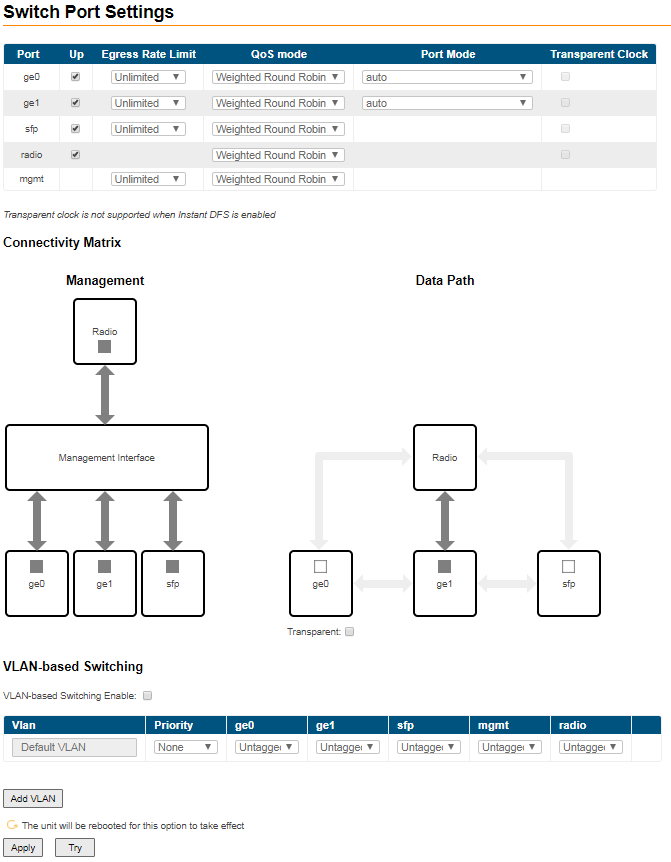 Image Added Image Added
|
|
- "Switch Port Settings" - allows you to perform general port configuration.
| Center |
|---|
| Scroll Title |
|---|
| title | Figure - Switch Port Settings |
|---|
| 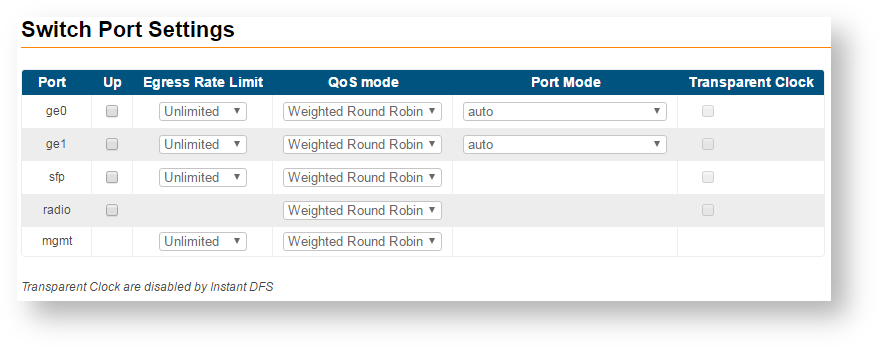 Image Removed Image Removed
|
|
The following port parameters can be customized:
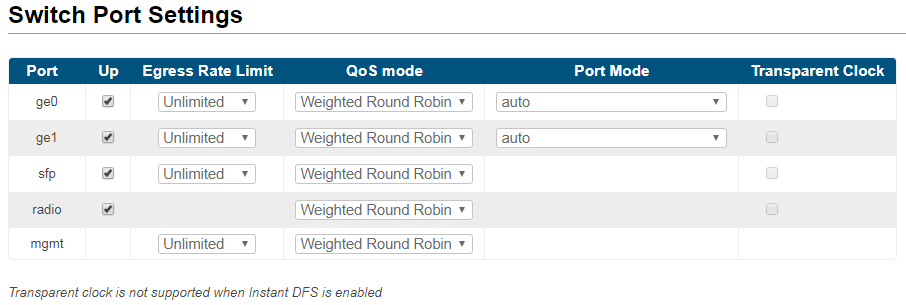 Image Added Image Added
|
|
| Center |
|---|
| Scroll Title |
|---|
| title | Table - Port parameters |
|---|
| | Parameter | Description |
|---|
| Up | - You can enable or disable the port status
| | Egress Rate Limit | - You can set the limit (traffic shaper) on the selected port, for outgoing traffic, in Mbps, from 1 to 100 in increments of 1, from 100 to 1000 in increments of 10, or to set it unlimited
| | QoS mode | - You can select the traffic shaper policy for the port, WRR is selected by default
- “Weighted Round Robin” - weights are used for every queue of an interface, which allows different queues to have different service shares depending on the weight value
- “Strict” - packets within lower priority queue are not processed if the higher priority queue is not empty
| | Port Mode | - You can select the physical port operational mode from:
- auto: the speed and operational mode of the port will be negotiated between the 2 end points
- 10BaseT-halfduplex;10BaseT-halfduplexmanual; 10BaseT-fullduplex;10BaseT-fullduplex-manual
- 100BaseTX-halfduplex; 100BaseTX-halfduplex-manual; 100BaseTX-fullduplex; 100BaseTX-fullduplex-manual
- 1000BaseTX-fullduplex;1000BaseTX-fullduplex-manual
| | Transparent Clock | - You can enable or disable synchronization clock in accordance with Precision Time Protocol (IEEE 1588)
|
|
|
| Note |
|---|
|
Manual settings for the "Port Mode" will disable the negotiation and detection for speed and duplex. Use them in case that the interconnected 3rd party switches have fixed speed and duplex settings. |
...
- "Isolated" - All traffic switching is allowed ONLY between external (ge0, ge1, sfp) and internal ports (mgmt, radio). Thus, direct switching between external ports is forbidden (for example, between "ge0" and "ge1")
- "Transparent" - packet switching is allowed between external and internal ports
| Center |
|---|
| Scroll Title |
|---|
| title | Figure - Port Interconnection Schema |
|---|
|  Image Removed Image Removed
|
|
- The "Connectivity matrixConnectivity Matrix" allows you to enable or disable switching between internal and external ports of the switch.
| Center |
|---|
| Scroll Title |
|---|
| title | Figure - Connectivity matrix |
|---|
| 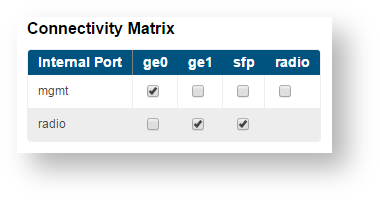 Image Removed Image Removed
|
|
For example, it is quite easy to disable management of the unit via wireless link just by disabling check box between “mgmt” and “radio” ports. Example shown below
| Center |
|---|
| Scroll Title |
|---|
| title | Figure - Connectivity matrix section example |
|---|
|  Image Removed Image Removed
|
|
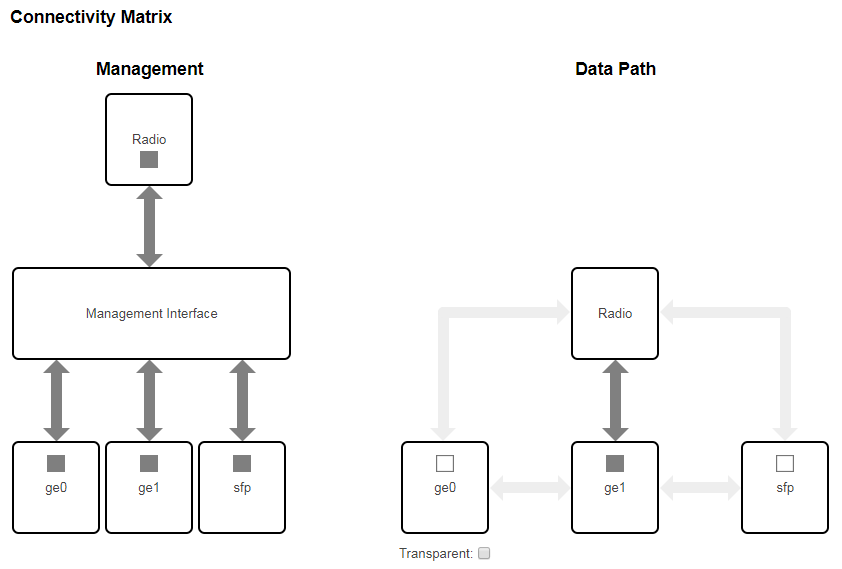 Image Added Image Added
|
|
In "Transparent" mode packet switching is allowed between external and internal ports, in case of VLAN-based Switching enabled switching is performed by VLAN tags.
- "VLAN-based Switching" allows to create list of allowed VLANs and their handling on InfiLINK XG switch plane. Without such option active, wireless link works as transparent Layer 2 bridge. Thus, the link transport any frames with any VLAN tags set.
| Center |
|---|
| Scroll Title |
|---|
| title | Figure - VLAN-based Switching |
|---|
| 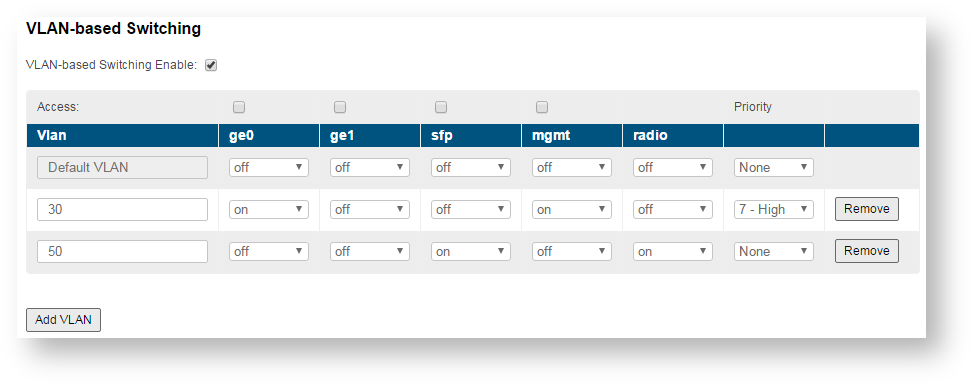 Image Removed Image Removed Image Added Image Added
|
|
The "Priority" field allows you to set the priority for the selected VLAN according to 802.1p ranging from 0 to 7, where 0 - the lowest priority level, 7 - the highest.










